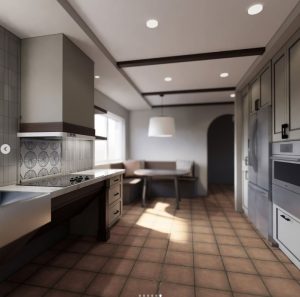
Photo from Baba Architects
Universal design is one of the best things to ever happen to people with disabilities. It opened up architecture, and the world, to all. This concept was first pioneered by Selwyn Goldsmith in his book, Designing for the Disabled, from 1963 (in which he also invented curb cuts). In his book, he explains the concept of universal design and the notion of thinking about people with disabilities the entire design process.
Many of us go through our daily lives not knowing the history behind this life-changing design. The Center for Universal Design at the University of North Carolina was in fact one of the first institutions to study universal design and developed 7 key principles to define the concept. To see these principles explained, check them out below.
1. Equitable Use
The first principle, Equitable Use, asks designers and architects to consider people with disabilities when designing a building in the early stages. Very often a wheelchair ramp is an afterthought without giving much thought to the design or aesthetics, and certainly not the universal use. A good example is when a wheelchair ramp is artfully integrated into a building’s layout.
2. Flexibility in Use
In spaces used by people with and without disabilities, the goal is that the space can be used by both parties equally, hence the second principal – Flexibility in Use. A great example of this is when adjustable height desks are installed for workers with disabilities, allowing them to share the same office space as their non-disabled counterparts.
3. Simple Intuitive Use
The principal of Simple Intuitive Use refers to the design of a building being easy to navigate, as well as everything inside the building being easy to use and figure out, like the signs inside a public building. A good example of this is making sure all of the signs in a building have both the spoken language and Braille.
4. Perceptible Information
The principal of Perceptible Information refers to equal communication, such as all signs in a public building having all the languages needed in order to full communicate with every visitor no matter their ability. Another good example of this is when audio devices are offered at museums for those with difficulty hearing.
5. Tolerance for Error
Accidents can happen at any moment. The principle of Tolerance for Error takes this into consideration. The design of a building should have the safety of people with disabilities in mind to minimize accidents as much as possible. For example, when a building’s main transportation for going up and down different levels is an elevator, a backup ramp should be always provided.
6. Low Physical Effort
No one likes a huge building that takes forever to get from point A to point B, and that is what the principle of Low Physical Effort refers to. The design of a building should be easy to use in an overall sense, such as having easy access points to making sure there are elevators and door openers all over the building. The building should be able to be used without exerting a lot of energy.
7. Size and Space for Approach and Use
One of the last principles developed by the Center for Universal Design at the University of North Carolina is Size and Space for Approach and Use. This means making sure elements of the overall design are the right size and space for people with disabilities to use. For example, wider doorways or having low buttons in an elevator. Any element inside a home that can be be used by someone without a disability should also be able to be used by someone with a disability whenever possible.
In 2012, the Center for Inclusive Design and Environmental Access at the University of Buffalo expanded on these principles, creating 8 principals, similar to the ones above. Check them out here.


 Older Posts
Older Posts







